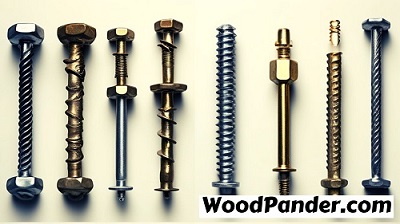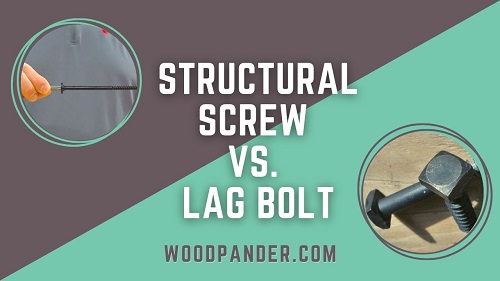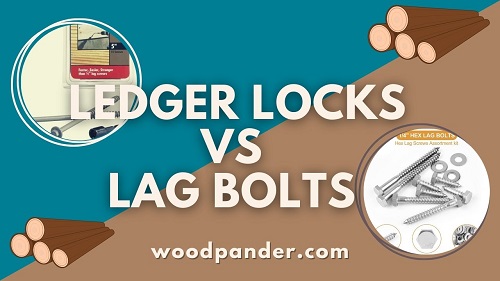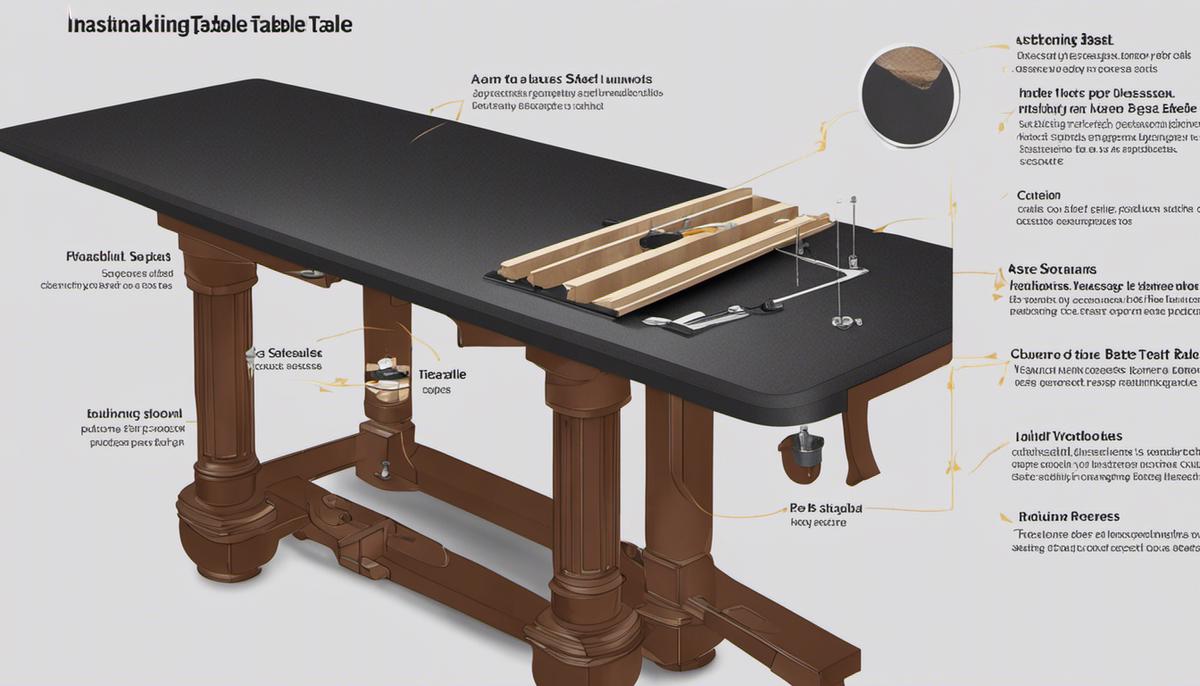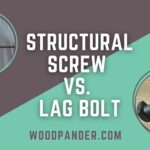When it comes to construction and woodworking projects, choosing the right fasteners is essential. Two commonly used types of bolts are lag bolts and hex bolts. While both serve similar purposes, they have distinct differences that make them suitable for specific applications.
In this article, we will compare lag bolts and hex bolts, exploring their characteristics, applications, installation processes, strength, and more. By understanding the differences between these two types of bolts, you’ll be able to make an informed choice for your next project.
Lag bolts are designed for heavy-duty applications in wood, providing strong grip and stability. Hex bolts, on the other hand, are versatile fasteners used in various materials, offering more options in terms of size and strength. Choose based on your project requirements.
Lag Bolt vs. Hex Bolt
| Lag Bolts | Hex Bolts | |
|---|---|---|
| Design | Thick, coarse-threaded screws with a hexagonal head | Thick, fully threaded screws with a hexagonal head |
| Usage | Used for heavy-duty applications where shear strength is important | Used in a wide range of applications for fastening materials together |
| Installation | Requires pre-drilled pilot holes | Typically used with nuts and washers for secure fastening |
| Materials | Available in steel, stainless steel, and other alloys | Available in a variety of materials including steel, stainless steel, brass, and more |
| Head Types | Hex head, washer head, and round head variations available | Hex head is most common, but other head types like socket head and flange head are also available |
| Strength | Provides strong holding power | Offers high tensile and shear strength |
| Length Options | Available in various lengths and diameters | Available in standard and metric sizes with different length options |
| Application | Ideal for wood-to-wood or wood-to-metal connections | Suitable for various applications including construction, automotive, machinery, and more |
| Removal | Can be removed easily with a wrench or socket | Requires tools like wrench or socket for removal |
| Common Uses | Deck construction, timber framing, furniture assembly | Structural steel connections, machinery assembly, automotive repairs |
One of our articles –Structural Screw vs. Lag Bolt.
What is a Lag Bolt?
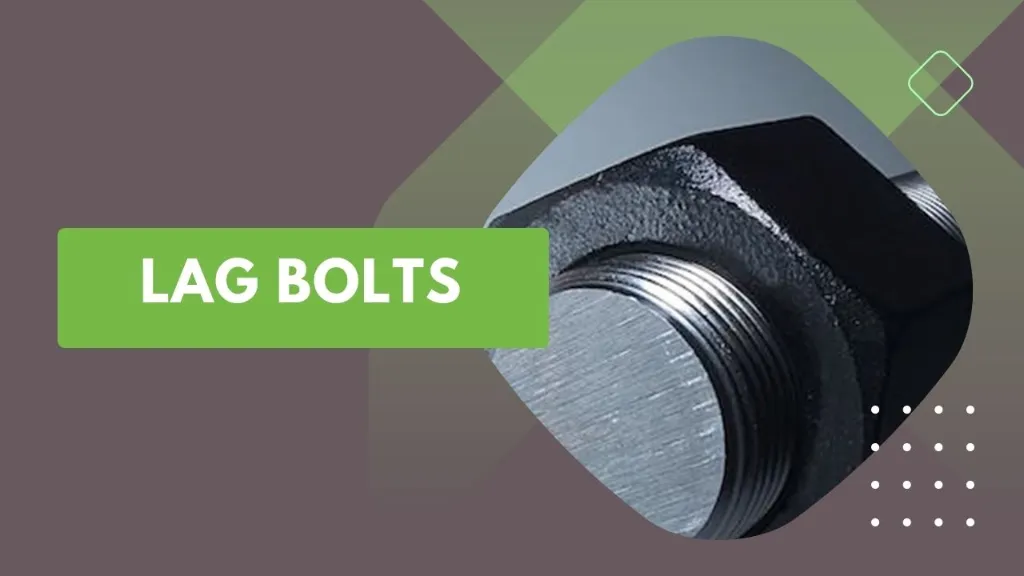
Lag bolts, also known as lag screws or coach screws, are heavy-duty fasteners primarily used for securing wood and other materials. These bolts have a threaded shaft with a sharp point at the end, allowing them to be self-drilling and self-tapping. Lag bolts typically have a hexagonal head, which can be tightened using a wrench or socket.
Common Uses of Lag Bolts
Lag bolts are commonly used in construction, woodworking, and outdoor applications. Some of their typical uses include:
- Building decks and fences
- Securing structural elements, such as beams and posts
- Installing wooden furniture or cabinetry
- Attaching metal brackets to wood surfaces
One of our articles –How To Install Lag Bolts Into Studs ?
What is a Hex Bolt?
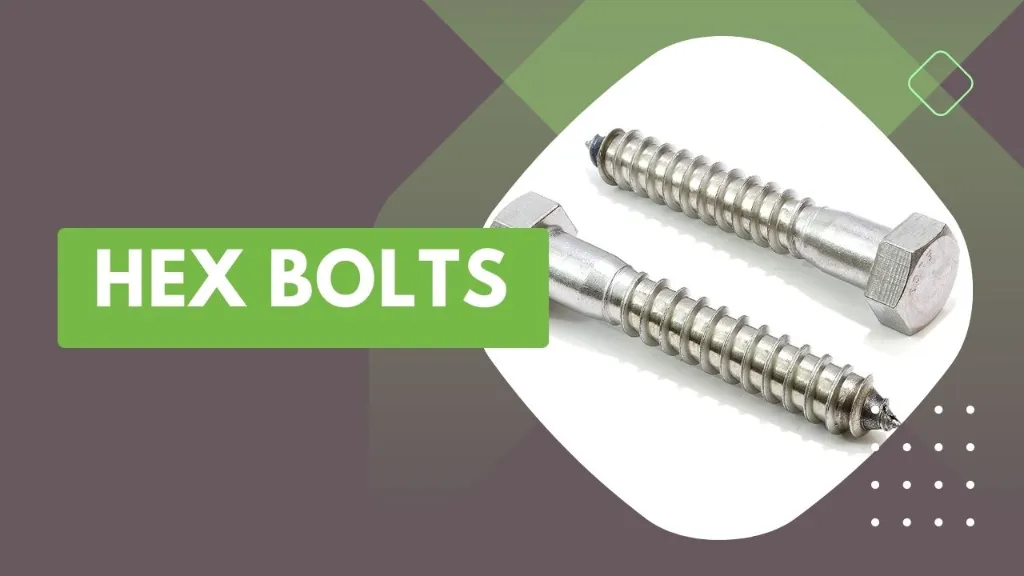
Hex bolts, also known as hexagon head bolts or machine bolts, are versatile fasteners with a hexagonal head and a threaded shaft. These bolts require a wrench or socket to tighten them securely. Hex bolts come in various lengths and diameters, allowing them to accommodate a wide range of applications.
Common Uses of Hex Bolts
Hex bolts are extensively used in construction, machinery, automotive, and other industries. Some common applications include:
- Assembling machinery and equipment
- Joining metal components together
- Fastening structural elements
- Securing parts in automotive and mechanical assemblies
Comparison between Lag Bolt vs. Hex Bolt
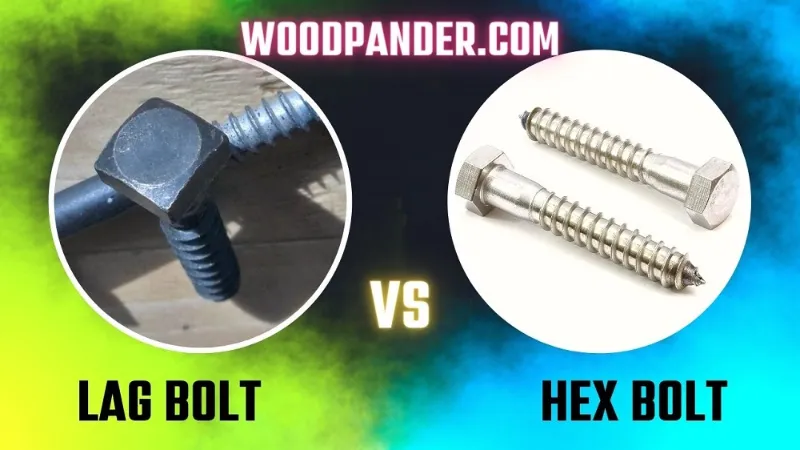
Size and Shape
Differences in Size:
Lag bolts are generally larger and thicker compared to hex bolts. They are available in longer lengths, typically ranging from 1 inch to 12 inches or more. Hex bolts come in various sizes, including shorter lengths suitable for lighter-duty applications.
Differences in Shape:
Lag bolts have a tapered point at the end, allowing them to be easily driven into wood surfaces. Hex bolts, on the other hand, have a flat or chamfered end, making them suitable for applications where a flush finish is required.
Installation
Installation Process for Lag Bolts:
To install a lag bolt, you typically need to pre-drill a hole in the wood using a drill
bit slightly smaller than the diameter of the bolt. This ensures a snug fit and prevents splitting of the wood. Once the hole is drilled, you can drive the lag bolt into the wood using a wrench or socket, applying firm pressure until it is securely fastened.
Installation Process for Hex Bolts:
Installing a hex bolt follows a similar process to lag bolts. However, hex bolts do not require pre-drilling in most cases, especially when working with metal or other sturdy materials. You can directly insert the bolt into the pre-tapped hole or use a nut on the other side to secure it in place. Using a wrench or socket, tighten the hex bolt until it is firmly fastened.
Strength and Load-Bearing Capacity
Lag bolts are renowned for their exceptional strength and load-bearing capacity. The coarse threading of lag bolts provides excellent grip and makes them highly resistant to loosening over time. These bolts are designed to withstand heavy loads and offer superior holding power in wood and other materials.
Hex bolts, on the other hand, also possess impressive strength characteristics. Their threading pattern allows for secure fastening and ensures stability in various applications. Hex bolts are commonly used in machinery and structural assemblies where high tensile strength is required.
Application Areas
Lag Bolt Applications:
Lag bolts find extensive use in woodworking projects and outdoor applications. They are commonly employed in the following areas:
- Deck Construction: Lag bolts are ideal for securing deck posts, beams, and railing systems.
- Fence Installation: Lag bolts are used to fasten fence posts to the ground or attach fence panels to wooden frames.
- Furniture Assembly: Lag bolts are commonly used to join wooden components in furniture construction, ensuring durability and stability.
- Timber Framing: Lag bolts are indispensable for timber framing projects, where they provide structural support and hold beams together.
Hex Bolt Applications:
Hex bolts have a broader range of applications and are commonly found in the following areas:
- Machinery Assembly: Hex bolts are extensively used in assembling machinery and equipment, ensuring the secure attachment of parts.
- Automotive Industry: Hex bolts play a crucial role in automotive manufacturing, fastening components in engines, chassis, and bodywork.
- Construction Projects: Hex bolts are utilized in various construction applications, such as securing structural elements, connecting steel beams, and assembling scaffolding.
- General Repairs and Maintenance: Hex bolts are handy for general repairs and maintenance tasks, including fixing loose bolts and replacing worn-out fasteners.
Advantages and Disadvantages
Advantages of Lag Bolts:
- Excellent grip and load-bearing capacity in wood
- Self-drilling and self-tapping design
- Suitable for heavy-duty applications
- Resistant to loosening over time
- Easy installation process with pre-drilling
Disadvantages of Lag Bolts:
- Limited suitability for non-wood materials
- Require pre-drilling, adding extra steps to the installation process
- Relatively larger size and may not be suitable for smaller projects
Advantages of Hex Bolts:
- Versatile and suitable for various materials, including metal
- Wide range of sizes and lengths available
- Ideal for machinery and structural assemblies
- Easy to find and widely used in different industries
- Efficient installation process without pre-drilling in most cases
Disadvantages of Hex Bolts:
- May require additional tools such as nuts and washers for installation
- Less suitable for load-bearing in wood compared to lag bolts
- Threading can potentially strip if overtightened
When to Use Each
Choosing between lag bolts and hex bolts depends on the specific requirements of your project. Consider the
specific factors below to determine when to use each type of bolt:
Use Lag Bolts When:
- Working with wood: Lag bolts excel in wood applications due to their exceptional grip and load-bearing capacity.
- Needing heavy-duty strength: Lag bolts are ideal for projects that require superior strength and stability, such as deck construction or timber framing.
- Requiring secure fastening: If you need a bolt that resists loosening over time, lag bolts are an excellent choice.
- Working on outdoor projects: Lag bolts are resistant to weather elements, making them suitable for outdoor applications like fence installation or deck building.
Use Hex Bolts When:
- Working with various materials: Hex bolts are versatile and can be used in different materials, including metal, making them suitable for a wider range of applications.
- Needing flexibility in size and length: Hex bolts come in various sizes and lengths, allowing you to choose the right one for your specific project requirements.
- Assembling machinery or equipment: Hex bolts are commonly used in machinery assembly due to their strength and reliability.
- Seeking ease of installation: Hex bolts often do not require pre-drilling, making the installation process more straightforward and efficient.
By considering these factors, you can make an informed decision on whether to use lag bolts or hex bolts for your specific project needs.
One of our articles –Olympic Vs Behr Deck Stain.
Conclusion
In summary, lag bolts and hex bolts are two distinct types of fasteners that serve different purposes. Lag bolts are robust, self-drilling screws primarily used in wood applications, offering exceptional strength and load-bearing capacity. On the other hand, hex bolts are versatile fasteners suitable for various materials and applications, commonly found in machinery assembly and construction projects.
When choosing between lag bolts and hex bolts, consider the material you are working with, the desired strength and load-bearing capacity, the ease of installation, and the specific requirements of your project. By understanding the characteristics, advantages, and disadvantages of each type of bolt, you can make an informed choice and ensure the success and longevity of your construction or woodworking endeavor.

